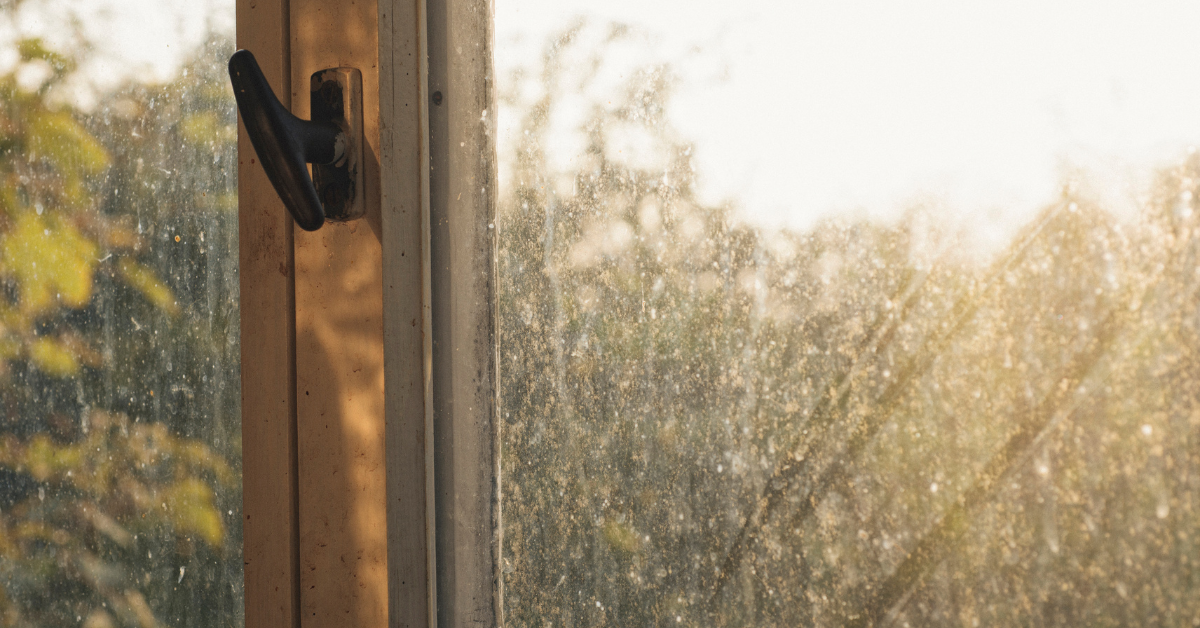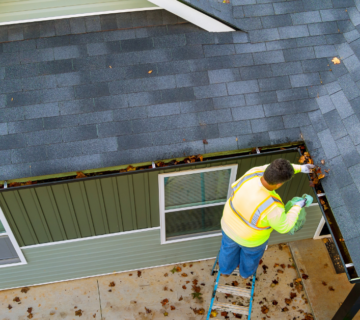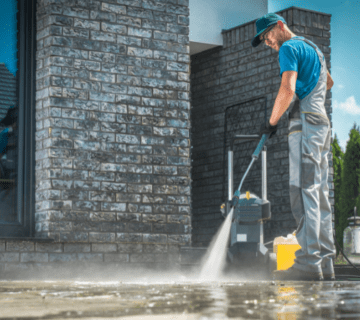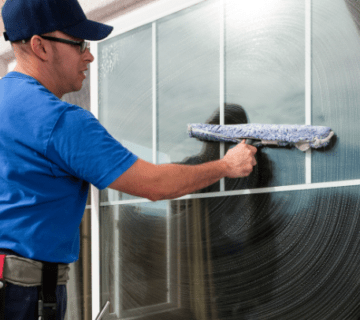Dirty windows block up to 25% of natural sunlight from entering your home. Yet the problem goes beyond just dimming your living space. The Asthma and Allergy Foundation of America reports that proper window cleaning in Rochester, NY, can cut allergy symptoms in half for people who suffer from them.
Eight out of ten Americans live with exposure to dust mites. Neglected windows become perfect breeding grounds for these tiny invaders and other indoor allergens.
Windows should protect you from outdoor irritants, but without regular care, they turn into collection spots for dust, pollen and mold spores—all triggers for breathing problems.
More Than Just Dust
Your window surfaces host a tiny world far more complex than ordinary dust. Windows provide perfect conditions for allergens to gather, often causing breathing problems and allergic responses in sensitive people. Consider this reality: eight out of ten Americans face exposure to dust mites, while six out of ten live with cat or dog dander in their homes.
The surprising variety of allergens on your windows
Window surfaces collect several potential allergy triggers you might not expect:
- Dust mites: These tiny arthropods (0.3mm long) live in house dust, creating allergenic proteins in their waste. Their particles measure 10-35 μm, small enough to breathe in easily.
- Mold spores: Wet, dirty windows encourage mold growth, releasing allergy-causing spores into your air. Breathing these spores often leads to noticeable respiratory symptoms.
- Pet dander: Flakes of dead skin, dried saliva and urine from pets cling to window surfaces and frames. Unlike pollen, pet dander stays potent for up to six months after pets leave.
- Pollen particles: Spring and fall bring tree and weed pollen that slips through window cracks and stick to glass, creating a storage place for seasonal allergens.
How allergens enter and stick to window surfaces
Allergens reach your windows through several routes. The wind carries outdoor allergens like pollen through open windows or tiny gaps in window seals. Broken caulking and small cracks around windows easily catch contaminants like pollen.
Window condensation adds moisture that helps allergens stick while creating the humidity that dust mites and mold need to grow. This explains why allergy symptoms often continue long after the cause is removed.
Seasonal Window Allergen Challenges
Each season brings unique allergen challenges to your windows. The types and amounts of troublesome particles change with the weather, calling for different cleaning approaches throughout the year.
Spring pollen: the invisible invader
Spring unleashes tree pollen everywhere, particularly from birch, cedar and maple trees. These tiny particles create special problems because they can float hundreds of miles through the air. Pollen landing on your windows forms a sticky yellow layer that captures even more dust and debris. Frustratingly, pollen sneaks through the smallest cracks even when windows stay closed, building up on glass, sills and tracks.
Summer mold and humidity concerns
Summer humidity paired with rising temperatures creates perfect conditions for mold on window surfaces. Condensation forms when cool air-conditioned air touches warm window glass, creating moisture where mold spores thrive. Surprisingly, setting your air conditioner too cold increases window condensation—and, consequently, mold growth.
Fall and winter allergen accumulation patterns
Fall weather brings ragweed pollen, reaching its peak in early to mid-September across many regions. These particles readily collect on window surfaces and often trigger severe allergic reactions. Later, indoor allergens become trapped inside your home as temperatures drop and windows stay closed longer.
Regular seasonal maintenance stops these allergens from piling up on your windows and harming indoor air quality.
Effective Window Cleaning Methods to Remove Allergens
DIY cleaning solutions that kill allergens
Making your allergen-fighting cleaners saves money and works well. Start with a simple mix of warm water, one part white vinegar and a few drops of dishwashing soap. This solution naturally breaks down allergens without harsh chemicals.
When tackling window cleaning:
- Use microfiber cloths rather than feather dusters to capture allergens instead of scattering them
- Damp dust weekly with a 5% bleach-water solution to kill dust mites and mold spores
- Give extra attention to window tracks and frames where allergens love to hide
Professional window cleaning NY services: what to expect
Professional cleaners provide thorough allergen removal beyond what typical DIY methods achieve. These experts use specialized tools, such as HEPA-filtered vacuums and professional-grade cleaning solutions, to eliminate allergens.
Good professional services will:
- Clean every part of your windows (glass, frames, tracks, sills)
- Remove mold safely without spreading spores throughout your home
- Check for potential leaks or seal problems that might let allergens sneak in
How often should you clean your windows for allergen control?
Your cleaning schedule should match your environment and personal sensitivity. Most homes need interior window surfaces wiped monthly, with deeper exterior cleaning twice yearly—usually in spring and fall.
People living in high-pollution areas or near construction sites need more frequent cleanups, three times a year. Homes with pets or allergy sufferers also benefit from stepped-up cleaning schedules.
Your best seasonal cleaning plan includes:
- Weekly dusting of window frames and sills
- Monthly interior glass cleaning
- Deep cleaning of all window parts twice a year
Your Family’s Invisible Shield Against Indoor Allergens
Clean windows offer more than just crystal-clear views – they are vital to healthier indoor air and family wellness. Well-maintained windows are strong shields against countless allergens that might trigger breathing problems and allergic responses.
Remember that clean windows matter beyond just looking nice. Beautiful windows enhance your home’s appearance and guard your family’s health by removing harmful allergens. Ready for professional help with window allergens? Call All Seasons Window Cleaning at (585) 454-1120 to book expert window cleaning that removes dangerous allergens while maintaining your windows’ protective benefits.
FAQs
Q1. How often should I clean my windows to reduce allergens? For optimal allergen control, clean interior window surfaces monthly and perform thorough exterior cleaning twice a year, typically in spring and fall. However, homes in high-pollution areas or with allergy sufferers may benefit from more frequent cleaning, up to three times annually.
Q2. What are some signs that my windows are harboring allergens? Look for a dusty film on glass or sills, dark spots indicating mold growth, excessive condensation or visible pollen (yellowish powder) on windowsills. You may also notice increased allergy symptoms when near windows or during cleaning.
Q3. Can professional window cleaning services help with allergen removal? Yes, they can be highly effective in removing allergens. They use specialized equipment like HEPA-filtered vacuums and professional-grade cleaning solutions to thoroughly eliminate allergens from all window components, including hard-to-reach areas.










No comment